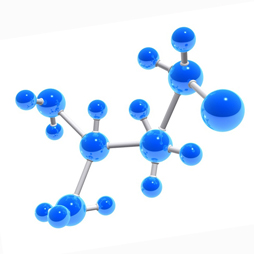After years of internal FDA debate, the FDA issued a guidance yesterday which was designed to assist an ANDA applicant in “determining when an application for a synthetic peptide drug product (synthetic peptide) that refers to a previously approved peptide drug product of recombinant deoxyribonucleic acid (rDNA) origin (peptide of rDNA origin) should be submitted as an abbreviated new drug application (ANDA) under section 505(j) of the Federal Food, Drug, and Cosmetic Act (FD&C Act) rather than as a new drug application (NDA) under section 505(b) of the FD&C Act.”
The debate centered on whether an rDNA peptide product and a synthetic peptide could be considered therapeutically equivalent. We know the Office of Generic Drugs (OGD) will not accept an ANDA for an rDNA derived peptide product at this time, but now there is a potential for a fully synthetic peptide version of certain reference listed drugs (RLD) peptide products to be submitted as an ANDA and approved as therapeutically equivalent to the RLD. At this time, the FDA is comfortable stating that “[S]pecifically, this guidance covers the following five peptide drug products: glucagon, liraglutide, nesiritide, teriparatide, and teduglutide.” I would assume if a firm was interested in seeking approval for another rDNA origin product that comes along, that FDA would likely apply the same principles; however, since this guidance covers only the five products listed above, it is suggested that ANDA applicants seek FDA advice if approval is sought for any other rDNA products today or any new rDNA products that may fit the requirements outlined in the guidance approved in the future.
Why, after all the years of considerations, is it now that OGD may permit such submissions? Additionally, what will OGD and the Office of Product Quality (OPQ) be looking at to make its decision to support approval?
First, OGD and OPQ believe that the current advances in analytical methods and the state of peptide synthesis and characterization has progressed to the point where FDA now has greater confidence in application of these newer methods in conjunction with FDA’s current knowledge to permit acceptance of an ANDA, and if the applicant can meet the requirements ultimately approve the synthetic peptide product as therapeutically equivalent to the rDNA RLD product.
The guidance (available here) outlies some of the considerations relative to comparison of rDNA and synthetic peptide products:
- Similarity in impurity profile of the test and reference products
- show that, for each peptide-related impurity that is found in both the proposed generic synthetic peptide and the RLD, the level of such impurity in the proposed generic synthetic peptide is the same as or lower than that found in the RLD
- show that the proposed generic synthetic peptide does not contain any new specified peptide-related impurity that is more than 0.5 percent of the drug substance
- characterize each new specified peptide-related impurity
- justify for each new specified peptide-related impurity that is no more than 0.5 percent of the drug substance why such impurity does not affect the safety of the proposed generic synthetic peptide and does not affect its effectiveness
Thus, a clean synthetic peptide product that has the same impurity profile as the RLD with no more of each impurity identified in the RLD and containing no new impurities other than those found in the RLD would have the greatest chance of approval success.
In addition, FDA has designated a polymer consisting of a maximum of 40 or fewer amino acids to be a peptide regulated under the FD&C Act rather than a protein regulated under the Public Health Service Act. “Accordingly, glucagon, liraglutide, nesiritide, teriparatide, and teduglutide are peptides subject to regulation under the FD&C Act.” So if the RLD has more than 40 amino acids, then don’t bother chasing an ANDA submission.
Characterization methods must be shown to be sensitive and accurate enough to permit a determination that the synthetic peptide is the same drug substance as the of the rDNA RLD.
The guidance goes on to discuss the potential for immunogenicity issues that must be addressed by the ANDA applicant, and describes in further detail the scientific considerations for ANDAs for proposed generic synthetic peptide products including
- Active ingredient sameness
- Impurity considerations
The guidance document suggests that the applicant seek counsel with the FDA through either controlled correspondence or a pre-ANDA meeting. Read the guidance document carefully and it you think you can meet the general requirements, It is still highly recommended the applicants proposing to submit such ANDAs seek advice from the FDA early in their development program to achieve the highest probability of success. Also remember that just because the FDA has opened the door, approval may still be elusive if the data does not support approval.




